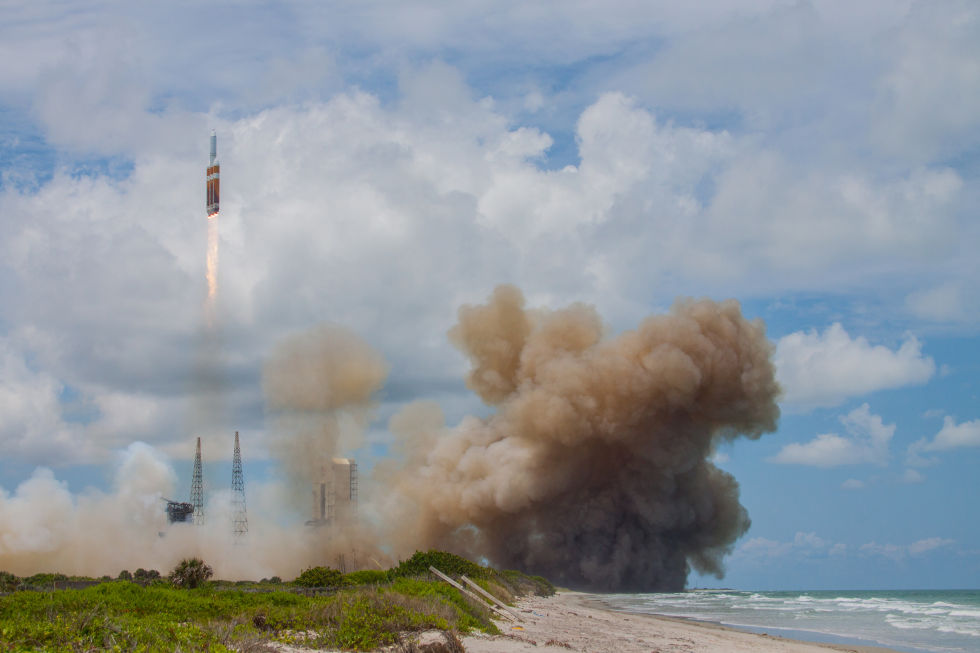-
United Launch Alliance’s Delta IV Heavy rocket lifted off for the final time on Tuesday.
United Launch Alliance -
The rocket will now go into retirement after 16 flights.
United Launch Alliance -
The rocket sets itself on fire due to excess hydrogen.
United Launch Alliance -
For a time, it was the most powerful operational rocket in the world.
United Launch Alliance -
By the time of its retirement it was surpassed by the Falcon Heavy, Space Launch System, and Starship rockets.
United Launch Alliance
I’ve got a guilty secret that I can now share—I loved the Delta IV Heavy rocket.
No, I didn’t love the price, which was preposterous, at times approaching $400 million. This precluded Delta from having any other customers than the US government. I didn’t love the low flight rate, just 16 missions in 20 years. This prevented the rocket’s operator, United Launch Alliance, from ever approaching anything remotely like efficient operations.
But there were two things I adored about the Delta IV Heavy rocket, which made its final launch on Tuesday. I loved watching it take flight. And I love that, warts and all, it demonstrated that private companies could develop a heavy lift rocket. The Delta booster, although the product of decades of traditional space development, offered a glimpse of the commercial launch future that we’re living in today.
The most metal of rockets
A Delta IV Heavy launch in June 2016 produced the most spectacular launch photograph I have ever seen (shown below). Liftoff of the classified mission on a partly cloudy day, by the sea, resulted in not so much a rocket launch photo but something resembling an impressionist painting with the huge dust cloud it kicked up.
She sure was pretty to see fly.
The other awesome thing about watching a Delta IV Heavy launch is that the rocket always looked like it was about to blow up due to a fireball engulfing the vehicle.
This is because of its massive RS-68 rocket engines. Developed during the 1990s by Rocketdyne, the expendable RS-68 engine was intended to be less expensive and more powerful than the Space Shuttle’s reusable RS-25 main engines. Both engines run on a cryogenic fuel mix of liquid hydrogen and liquid oxygen.

United Launch Alliance
The fireball phenomenon manifests because of design differences between the RS-68 and the Shuttle main engines and because the RS-68 propellant valve is open longer before the oxidizer starts flowing. Essentially, at engine startup, only liquid hydrogen is running through the engine because it is less chemically active than oxygen.
This hydrogen flows out of the engine, and because hydrogen is very light compared to ambient air, it rises up the outside of the rocket. When the liquid oxygen flow begins, the excess hydrogen is ignited into a fireball. This occurs within the last five seconds of the countdown. This design trade was intentional, and the exterior of the rocket is configured to withstand the fireball.
It looked amazing every time.
A glimpse of the future
After the retirement of NASA’s space shuttle in 2011, the Delta IV Heavy became the most powerful operational rocket in the world, with a lift capacity of nearly 29 metric tons to low-Earth orbit. Only a handful of government-developed vehicles, including NASA’s Saturn V lunar rocket and Russia’s Energia vehicle, had more lift capacity.
There was a time, now about 20 years ago, when the Delta IV Heavy was considered the primary launch vehicle for the Orion spacecraft NASA was developing. With a more powerful upper stage—later to be known as the Advanced Cryogenic Evolved Stage, or ACES—it could have played a role in human exploration beyond low-Earth orbit.
However, in 2006, NASA Administrator Mike Griffin quashed such notions by commissioning the Exploration Systems Architecture Study, which led to the space agency eschewing commercial options and developing its own super heavy lift rocket. Eventually this became known as the Space Launch System. NASA has spent more than $20 billion developing the SLS rocket, and its per-launch costs exceed $2 billion.
For the last two decades, however, the existence of the Delta IV Heavy has offered another way. Namely, with multiple launches of commercial vehicles, known as distributed launch, NASA could foster a more sustainable exploration architecture with lower-cost rockets and in-space refueling. As late as 2019, some inside NASA were considering lunar missions using a combination of the Delta IV Heavy and SpaceX’s Falcon Heavy rocket. The Delta IV booster seems hardly like a champion for commercial launch, but it honestly was. One could point to the Delta and Falcon heavy lift vehicles and say there was a better way.
Of course a different story unfolded. The Delta IV Heavy rocket is now finished. NASA, thanks to consistent congressional pressure, has stuck with the massive and costly Space Launch System rocket. It will likely fly a few more missions.
Nevertheless, the future lies in distributed launch. SpaceX, with its Starship rocket, and Blue Origin, with its New Glenn vehicle, are both developing plans for multiple launches and propellant depots, with the aim of creating a sustainable plan for space exploration. To unlock this future they have taken the Delta IV Heavy one step further by incorporating reuse.
It is dead, but the future it once promised is not.
Listing image by United Launch Alliance




















+ There are no comments
Add yours